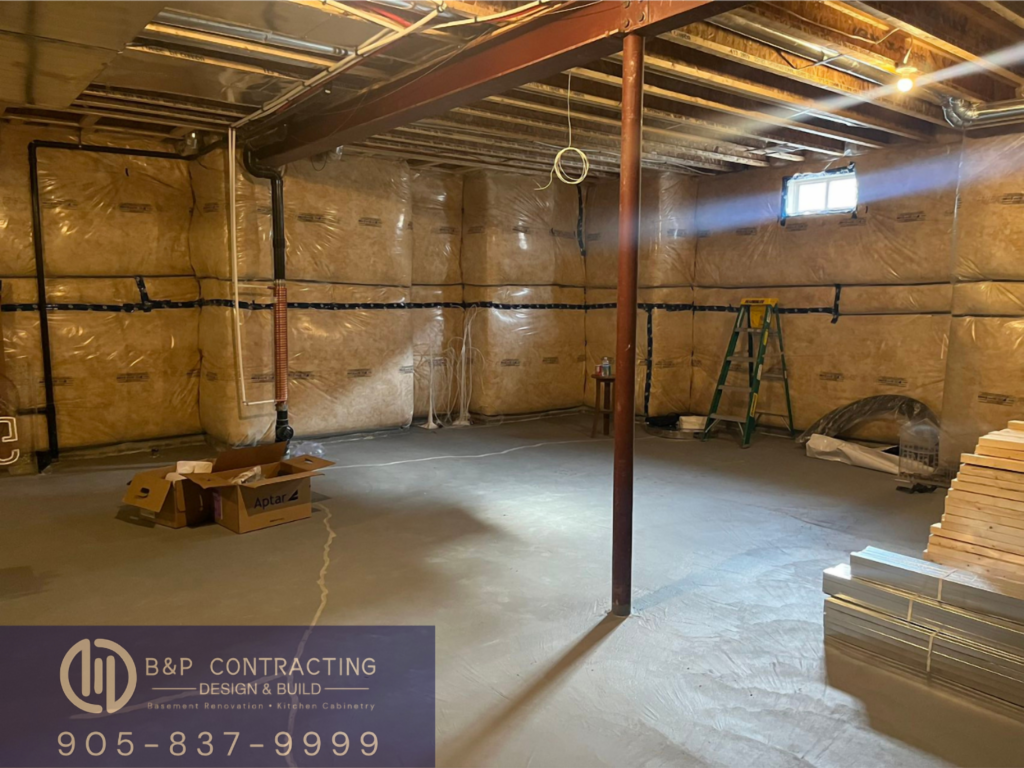To soundproof a basement ceiling, consider adding a second layer of drywall with green glue between the two layers to absorb sound and prevent echoes. This method helps reduce the noise transmission from upstairs rooms.

Credit: www.homelogic.co.uk
Materials Needed To Soundproof A Basement Ceiling
To soundproof a basement ceiling, you will need drywall, a resilient channel, sound-deadening mineral wool insulation, and an acoustic compound. Adding a second layer of drywall can reduce noise and create a quieter basement space.
Several materials can greatly reduce noise transmission and create a quieter living space when soundproofing a basement ceiling. Incorporating these materials will help dampen the sound, whether it’s footsteps from the floor above or the booming sound from a home theater system.
Drywall + Insulation
One key material needed for soundproofing a basement ceiling is drywall combined with insulation. Drywall is popular due to its ability to absorb and block sound waves. Multiple layers of drywall are recommended for enhanced soundproofing. Insulation plays a crucial role in reducing sound transmission through the ceiling. Fiberglass insulation is commonly used for its excellent sound absorption properties. Installing insulation between the joists before adding the drywall layers is essential.
Sound Deadening Mineral Wool Insulation
Another effective material for soundproofing a basement ceiling is sound-deadening mineral wool insulation. It is designed to absorb sound vibrations and minimize noise transmission between floors. Mineral wool insulation is dense and has excellent sound attenuation properties, making it an ideal choice for soundproofing projects. Installing mineral wool insulation in the ceiling cavity is important to block airborne and impact noises effectively.
Resilient Channel
Resilient channels are excellent at reducing sound transmission through structural vibrations. These channels are installed horizontally between the ceiling joists, allowing the drywall to be hung at a distance from the joists. The resilient channel effectively isolates the drywall from the structure, minimizing the transfer of sound vibrations. This helps to create a soundproof barrier between the basement ceiling and the floor above. Following the proper installation guidelines is important to ensure optimal soundproofing results.

Credit: acousticalsolutions.com
Methods For Soundproofing A Basement Ceiling
Soundproofing the ceiling is essential for creating a quiet and peaceful space in your basement. By reducing the noise between floors, you can enjoy a more serene environment. This article will explore different methods for soundproofing a basement ceiling to help you achieve the desired results.
Soundproofing Impact Noise
Impact noise, such as footsteps or dropped objects, can be a major disturbance in a basement. To minimize it, there are several effective methods:
- Use resilient channels: Resilient channels create a gap between the ceiling and the floor joists, reducing direct contact and preventing sound transmission.
- Install mass-loaded vinyl (MLV): MLV is a dense material that blocks sound transmission. It can be installed between the drywall and the ceiling to provide an extra layer of soundproofing.
Soundproofing An Already Finished Basement Ceiling
If your basement ceiling is finished, don’t worry – solutions are still available to soundproof it effectively. Consider the following methods:
- Use an acoustic compound: Acoustical compounds are applied directly to the ceiling, creating a sound-absorbing barrier that significantly reduces noise.
- Install mass-loaded vinyl (MLV): As mentioned earlier, MLV is a versatile soundproofing material that can be installed even on finished ceilings. It can be attached using adhesive or staple guns.
Mitigate Impact Noise Between Floors
To mitigate impact noise between floors, there are a few additional steps you can take:
- Add acoustic insulation: Installing acoustic insulation between the floor joists can help absorb impact noise and prevent it from traveling to other floors.
- Use putty pads on electrical boxes of lights: Electrical boxes can act as channels for sound transmission. Applying putty pads around them helps create a barrier and reduce noise transfer.
By implementing these methods, you can effectively soundproof your basement ceiling and create a peaceful and quiet space. Remember to consider the specific requirements of your basement and choose the soundproofing materials and techniques that best suit your needs.

Credit: www.bnpcontracting.ca
Frequently Asked Questions Of How To Sound Proof A Basement Ceiling
How Can I Soundproof My Basement Ceiling With Drywall?
To soundproof a basement ceiling with drywall, add a second layer to absorb sound and prevent echo. This extra layer will create a barrier that reduces noise transmission between floors.
Is It Possible To Soundproof A Basement Ceiling Without Removing Drywall?
Yes, it is possible to soundproof a basement ceiling without removing the existing drywall. One effective method is to use resilient channels. These channels are attached to the ceiling joists before installing the drywall. They help to isolate and absorb sound vibrations, reducing noise transmission.
What Materials Do I Need To Soundproof A Basement Ceiling?
To soundproof your basement ceiling, you will need soundproof insulation (e.g., mineral wool), resilient channels, acoustic sealant, drywall, and acoustic panels. These materials work together to reduce noise transmission and improve soundproofing.
Conclusion
Various methods and materials can be used to achieve a soundproof basement ceiling. From using drywall and insulation to adding a second layer of drywall with green glue, options are available to help absorb sound and prevent it from echoing throughout the space.
Implementing these techniques can create a quieter and more enjoyable environment in your basement. So, whether you are converting the space into a home theater or simply looking to reduce noise, soundproofing the ceiling is worth considering.

